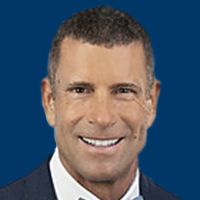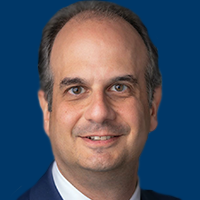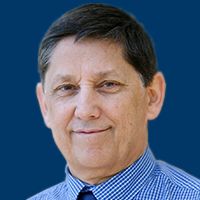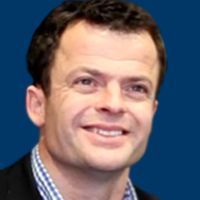New Patient Subsets, Emerging Therapies Advance ALL Care
Increasing subsets of patients—both adult and pediatric—with acute lymphoblastic leukemia are being administered therapies designed to target their molecular subtypes, according to Elias Joseph Jabbour, MD.
Elias Joseph Jabbour, MD
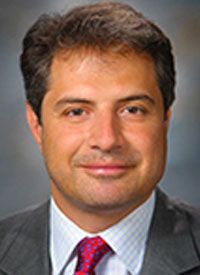
Elias Joseph Jabbour, MD
Increasing subsets of patients—both adult and pediatric—with acute lymphoblastic leukemia (ALL) are being administered therapies designed to target their molecular subtypes, according to Elias Joseph Jabbour, MD.
“We are making a lot of progress,” said Jabbour, who lectured during the 2016 OncLive State of the Science Summit on Treatment of Hematologic Malignancies. “We’re not yet at the level of pediatric leukemia, but a lot of things are happening. First of all, we are diagnosing new subsets. It is really important for clinicians to be able to differentiate different kinds of ALL.”
For adult patients with Philadelphia chromosome¬—negative relapsed/refractory B-cell precursor ALL, for example, the FDA granted an accelerated approval to the monoclonal antibody blinatumomab (Blincyto) in December 2014. Blinatumomab was later approved for pediatric patients in the same setting in July 2016.
OncLive: What treatments are available for patients with Philadelphia chromosome—positive ALL?
In an interview with OncLive, Jabbour, an associate professor in the Department of Leukemia at The University of Texas MD Anderson Cancer Center, discusses blinatumomab and other recent research and treatment advances in ALL.Jabbour: The Philadelphia-type ALL is a new entity. It has a worse outcome. Tyrosine kinase inhibitors added to chemotherapy may improve the outcome of these patients, but that remains to be proven.
Are there effective agents, and others on the horizon, in other subtypes?
In Philadelphia-positive ALL, we have the tyrosine kinase inhibitors. One of them is ponatinib (Iclusig). It’s very potent. Added to chemotherapy, we have a cure rate of 80%. Blinatumomab is a bispecific engager and, as a single agent in the relapsed setting has good activity of 40% responses. We are trying to combine blinatumomab and a TKI—mainly ponatinib—to see if we can replace chemotherapy and cure these patients without any more aggressive treatment.In B-cell ALL, rituximab (Rituxan) is a very potent drug. When added to chemotherapy, it does improve overall survival (OS) and event-free survival. For any [patient with] B-cell ALL with CD20 positivity, rituximab should be added. We are testing new drugs with better CD20 activity such as ofatumumab (Arzerra) and obinutuzumab (Gazyva). Ofatumumab we have good experience with—obinutuzumab not yet—but this is where we’re going.
In T-cell ALL, a lot of chemotherapy is good. Hyper-CVAD (cyclophosphamide, vincristine, doxorubicin, and dexamethasone) has a good track record with 65% survival at 5 years. The question is whether it is being tested in the frontline setting or not. One should be very careful and aware of what we call early T-cell precursor ALL. These are characterized by Cd1a-negative, CD5-negative, CD8-negative, and myeloid markers. They have a poor outcome.
For the relapsed setting, we have a wave of new drugs. Among them is inotuzumab ozogamicin, which is an anti-CD22 agent plus calicheamicin. In a randomized study, the drug has shown improved responses compared with standard of care—80% versus 30%—and a 7.7-month improved survival for these patients.
Blinatumomab has been available now for both adult and pediatric patients. Can you speak to its efficacy?
We tested this drug in combination with minimal chemotherapy in the relapsed setting for elderly patients. We have great results. For example, in the relapsed setting, the median survival is 11 months compared with 6 to 7 months for single agents. In elderly people who cannot tolerate intensive chemotherapy, giving them inotuzumab plus minimal chemotherapy is associated with a survival of 70% at 2 years compared with 30% with the historical experience.Blinatumomab is a bispecific engager that targets CD19 and CD3. In the relapsed setting, the drug is quite active with 50% responses. Results of a randomized trial in relapsed patients showed that, compared with standard of care, blinatumomab improved responses and OS at 7.7 months compared with 4 months for patients receiving standard of care.
What have we seen so far with chimeric antigen receptor T-cell therapy?
The drug is active as well in a minimal residual disease setting—what we call MRD—where 80% of the patients with MRD positivity were able to respond. Those who responded had a better survival of 14 months today. Where we used to give transplant for these patients, we do not need any more transplantation right away. We should convert them into MRD negativity by adding blinatumomab, and then move to transplantation.Another innovation in ALL is CAR T-cell therapy, in which we take the T cells from the patient, engineer them so they can express a marker against what is presented on the B cells. We send them back. They affect the B cells. In adult patients, we have great responses, as well as in pediatrics, and we need to learn more about the safety concern. In ALL, we are making a lot of progress for the [hopeful] cure of these patients.
